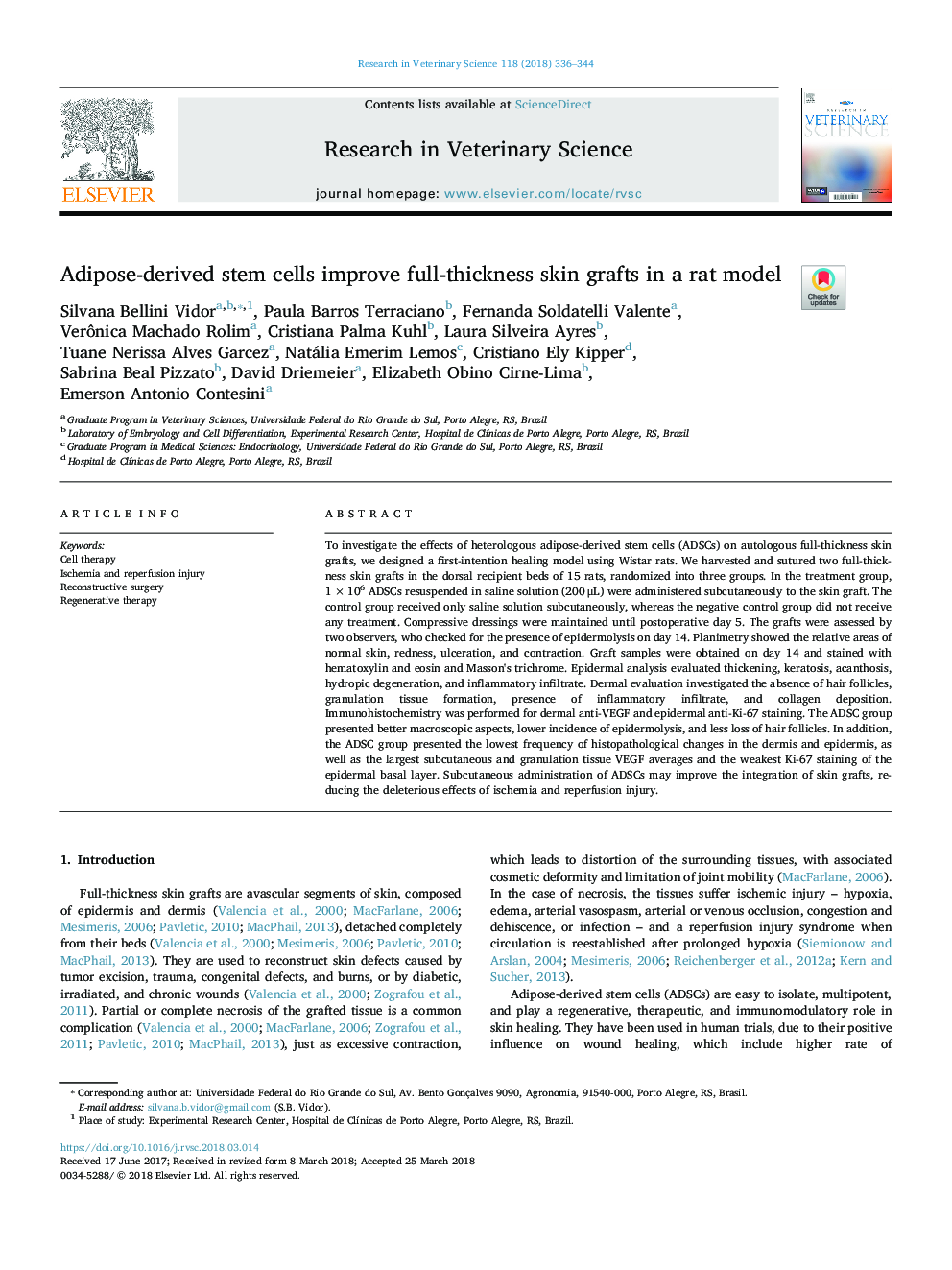| Article ID | Journal | Published Year | Pages | File Type |
|---|---|---|---|---|
| 8503991 | Research in Veterinary Science | 2018 | 9 Pages |
Abstract
To investigate the effects of heterologous adipose-derived stem cells (ADSCs) on autologous full-thickness skin grafts, we designed a first-intention healing model using Wistar rats. We harvested and sutured two full-thickness skin grafts in the dorsal recipient beds of 15 rats, randomized into three groups. In the treatment group, 1â¯Ãâ¯106 ADSCs resuspended in saline solution (200â¯Î¼L) were administered subcutaneously to the skin graft. The control group received only saline solution subcutaneously, whereas the negative control group did not receive any treatment. Compressive dressings were maintained until postoperative day 5. The grafts were assessed by two observers, who checked for the presence of epidermolysis on day 14. Planimetry showed the relative areas of normal skin, redness, ulceration, and contraction. Graft samples were obtained on day 14 and stained with hematoxylin and eosin and Masson's trichrome. Epidermal analysis evaluated thickening, keratosis, acanthosis, hydropic degeneration, and inflammatory infiltrate. Dermal evaluation investigated the absence of hair follicles, granulation tissue formation, presence of inflammatory infiltrate, and collagen deposition. Immunohistochemistry was performed for dermal anti-VEGF and epidermal anti-Ki-67 staining. The ADSC group presented better macroscopic aspects, lower incidence of epidermolysis, and less loss of hair follicles. In addition, the ADSC group presented the lowest frequency of histopathological changes in the dermis and epidermis, as well as the largest subcutaneous and granulation tissue VEGF averages and the weakest Ki-67 staining of the epidermal basal layer. Subcutaneous administration of ADSCs may improve the integration of skin grafts, reducing the deleterious effects of ischemia and reperfusion injury.
Related Topics
Life Sciences
Agricultural and Biological Sciences
Animal Science and Zoology
Authors
Silvana Bellini Vidor, Paula Barros Terraciano, Fernanda Soldatelli Valente, Verônica Machado Rolim, Cristiana Palma Kuhl, Laura Silveira Ayres, Tuane Nerissa Alves Garcez, Natália Emerim Lemos, Cristiano Ely Kipper, Sabrina Beal Pizzato,
